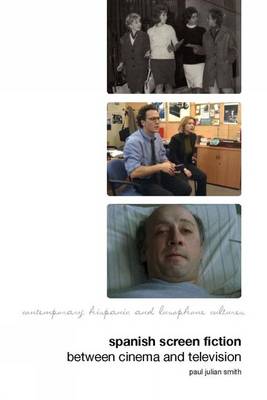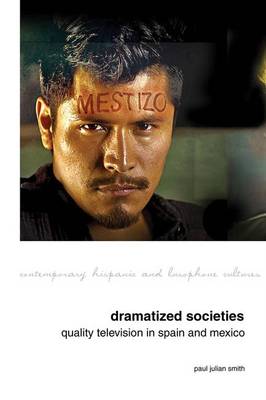Contemporary Hispanic and Lusophone Cultures
2 primary works
Book 3
This pioneering book is the first to argue that cinema and television in Spain only make sense when considered together as twin vehicles for screen fiction. The Spanish audiovisual sector is now one of the most successful in the world, with feature films achieving wider distribution in foreign markets than nations with better known cinematic traditions and newly innovative TV formats, already dominant at home, now widely exported. Beyond the industrial context, which has seen close convergence of the two media, this book also examines the textual evidence for crossover between cinema and television at the level of narrative and form.
The book, which is of interest to both Hispanic and media studies, gives new readings of some well-known texts and discovers new or forgotten ones. For example it compares Almodóvar’s classic feature Mujeres al borde de un ataque de nervios (‘Women on the Verge of a Nervous Breakdown’) with his production company El Deseo’s first venture into TV production, the 2006 series also known as Mujeres (‘Women’). It also reclaims the lost history of female flat share comedy on Spanish TV from the 1960s to the present day.
It examines a wide range of prize winning workplace drama on TV, from police shows, to hospital and legal series. Amenábar’s Mar adentro (‘The Sea Inside’) an Oscar-winning film on the theme of euthanasia, is contrasted with its antecedent, an episode of national network Tele5’s top-rated drama Periodistas. The book also traces the attempt to establish a Latin American genre, the telenovela, in the very different context of Spanish scheduling. Finally it proposes two new terms: ‘Auteur TV’ charts the careers of creators who have established distinctive profiles in television over decades; ‘sitcom cinema’ charts, conversely, the incursion of television aesthetics and economics into the film comedies that have proved amongst the most popular features at the Spanish box office in the last decade.
The book, which is of interest to both Hispanic and media studies, gives new readings of some well-known texts and discovers new or forgotten ones. For example it compares Almodóvar’s classic feature Mujeres al borde de un ataque de nervios (‘Women on the Verge of a Nervous Breakdown’) with his production company El Deseo’s first venture into TV production, the 2006 series also known as Mujeres (‘Women’). It also reclaims the lost history of female flat share comedy on Spanish TV from the 1960s to the present day.
It examines a wide range of prize winning workplace drama on TV, from police shows, to hospital and legal series. Amenábar’s Mar adentro (‘The Sea Inside’) an Oscar-winning film on the theme of euthanasia, is contrasted with its antecedent, an episode of national network Tele5’s top-rated drama Periodistas. The book also traces the attempt to establish a Latin American genre, the telenovela, in the very different context of Spanish scheduling. Finally it proposes two new terms: ‘Auteur TV’ charts the careers of creators who have established distinctive profiles in television over decades; ‘sitcom cinema’ charts, conversely, the incursion of television aesthetics and economics into the film comedies that have proved amongst the most popular features at the Spanish box office in the last decade.
Book 14
Dramatized Societies: Quality Television in Spain and Mexico
by Paul Julian Smith
Published 29 November 2016
Over the last decade Spain and Mexico have both produced an extraordinary wealth of television drama. Drawing on both national practices of production and reception and international theories of textual analysis this book offers the first study of contemporary quality TV drama in two countries where television has displaced cinema as the creative medium that shapes the national narrative. As dramatized societies, Spain and Mexico are thus at once reflected and refracted by the new series on the small screen.

